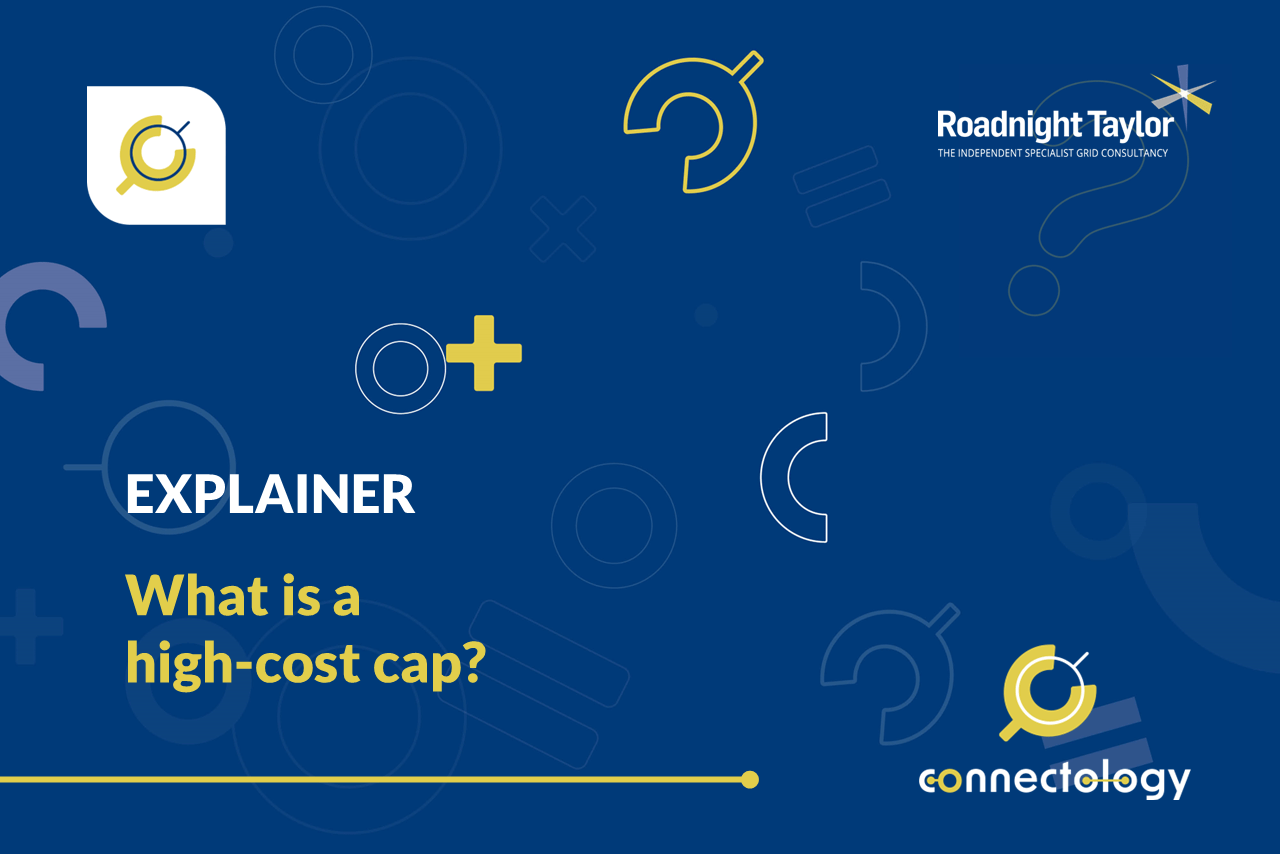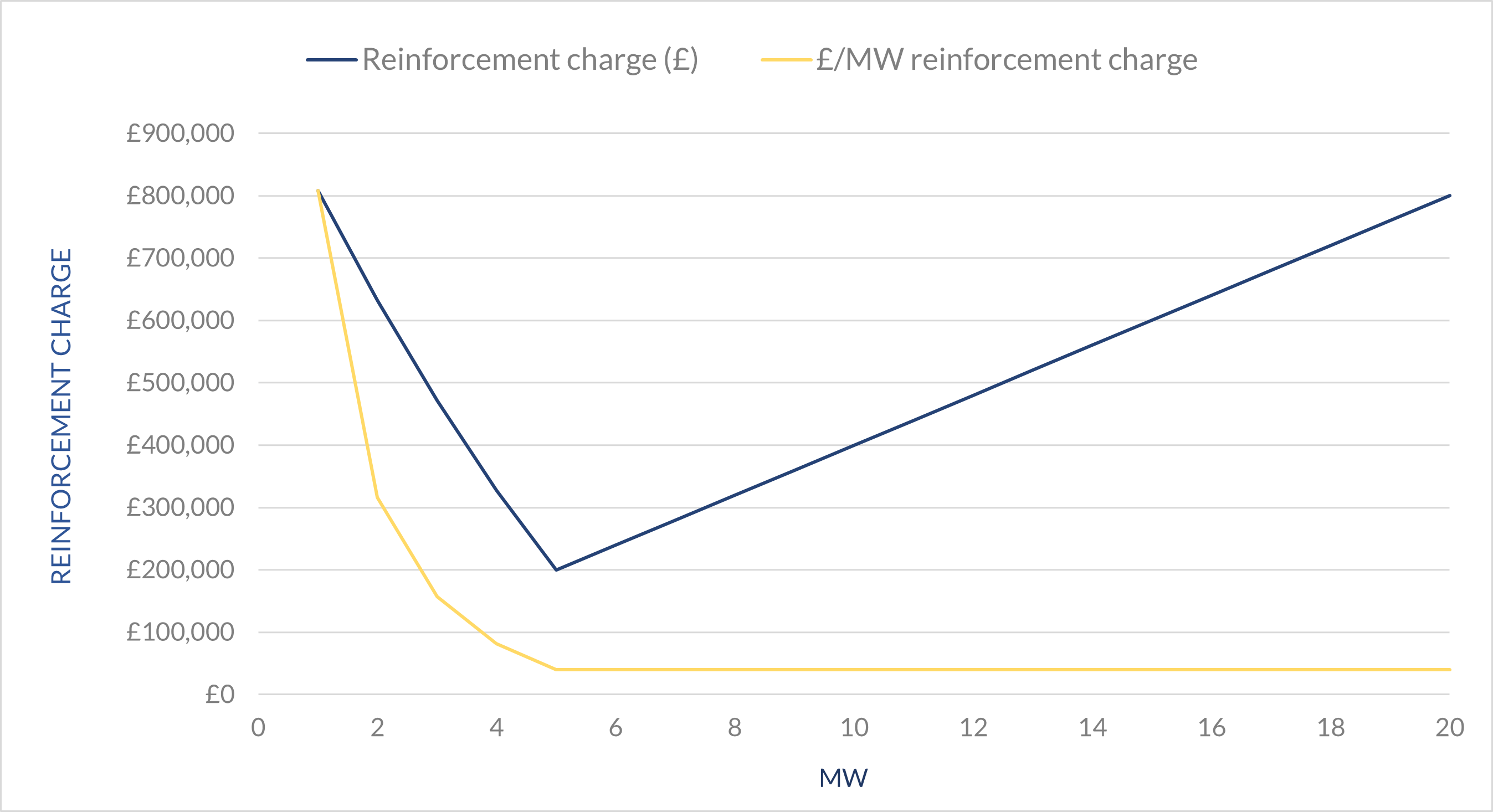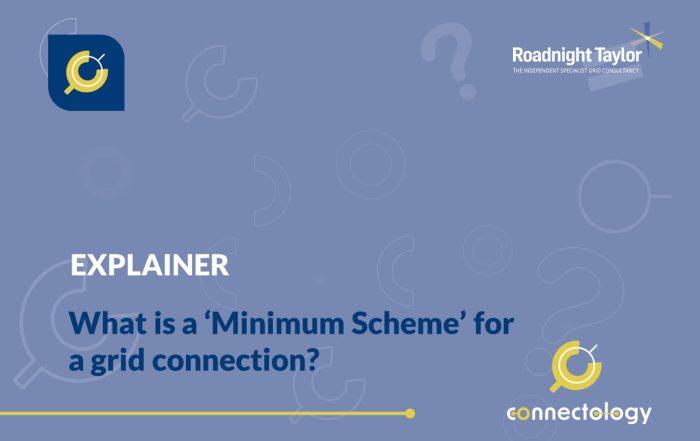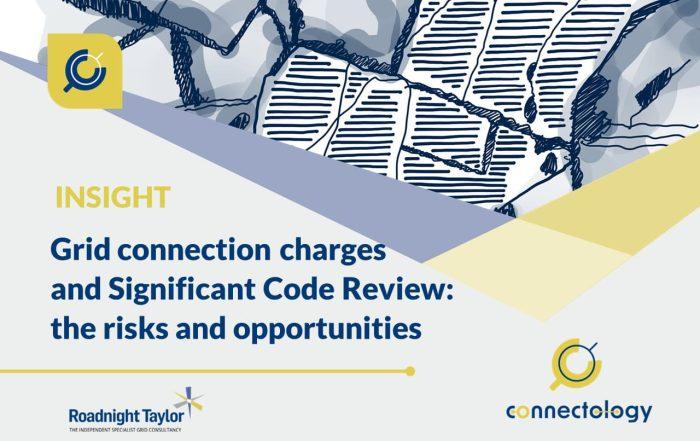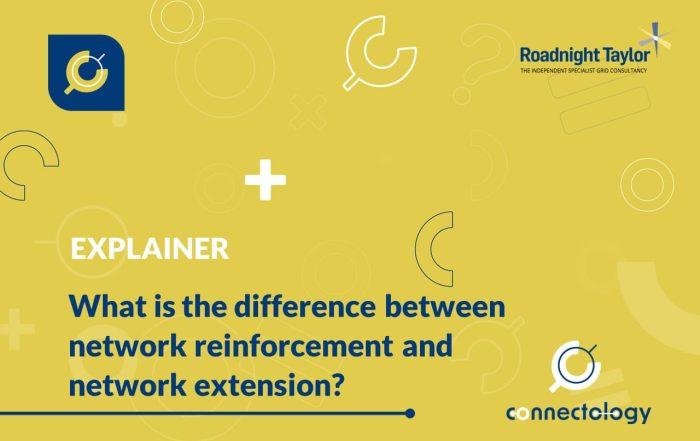What is a high-cost cap?
A high-cost cap is a way of limiting the amount of cost a Distribution Network Operator (DNO) might have to pick up from new grid connections. Pete Aston explains more below.
Article by Pete Aston – acknowledged expert in networks
Pete joined Roadnight Taylor from Western Power Distribution, the UK’s largest DNO, where he was Primary System Design Manager. He led a team of sixty responsible for all connections to the extra high voltage network, as well as leading WPD’s interaction with National Grid (NGET and NGESO) at the transmission/distribution boundary.
5th December 2022

Back in the dim and distant past of distribution price control DPCR4 (2005-2010), Ofgem introduced the concept of a high-cost cap of £200/kW for generation schemes. The Significant Code Review (SCR) changes that will come into force in April 2023 will introduce a high-cost cap for demand (there isn’t one at present). So, what exactly is a high-cost cap, and what are the implications for new connections?
What is a high-cost cap?
A high-cost cap is linked to network reinforcement and is a way of limiting the amount of cost a Distribution Network Operator (DNO) might have to pick up from new connections. Whilst a cap sounds like a good thing for a connecting customer, it can actually have devastating consequences on a scheme. In simple terms, anything above the level of the cap is paid for in full by the triggering customer, and any reinforcement cost below the level of the cap is shared via the Cost Apportionment Factor (CAF).
High-cost cap worked example
The best way of seeing this is with a worked example. Let’s assume that a 2MW generator wants to connect to the 11kV network. However, the headroom available on the 33kV network is not sufficient and so a 33kV reinforcement is needed. For the sake of argument, let’s assume the total cost of this reinforcement scheme is £1m (which buys about 3km of 33kV cable) and the new network capacity is 25MW.
| Items | Values |
|---|---|
| Generation size | 2MW |
| Reinforcement charge | £1 million |
| Generation high-cost cap | £200/kW |
| High-cost cap | 2MW * £200/kW = £400,000 |
| CAF of cost below cap |
£400,000 * 2MW / 25MW = £32,000
|
| Charge above cap |
£1,000,000 – £400,000 = £600,000
|
| Total charge: |
£32,000 + £600,000 = £632,000
|
For a 2MW, a reinforcement charge of £632k is clearly not viable, but for larger connections it might well work. The chart below shows the total reinforcement charge (£) and the £/MW reinforcement charge for the same reinforcement scheme described above (total cost £1m, new network capacity 25MW).
Figure 1. Reinforcement charge vs MW for a £1m reinforcement scheme
You can see that the absolute reinforcement charge is lowest for a 5MW scheme, and the £/MW is lowest for all schemes >=5MW. And this shows one of the implications of the high-cost cap, which is that it encourages larger connections, and can make smaller connections unviable. The logic behind this is that a larger connection will naturally pay a higher contribution towards the reinforcement through the CAF. For example, the 20MW scheme above is contributing 80% of the total reinforcement cost.
Limits to reinforcement capacity
In the example above, the reinforcement scheme to create a new network capacity of 25MW is, in reality, likely to have a limit for new generation connections of less than 20MW. If the existing circuit is 15MW and is full to capacity with generation, then increasing the new network capacity to 25MW will only allow an additional 10MW to connect (but note that the CAF is calculated on the basis of the new network capacity, not the increase in network capacity).
In the example above, new generation connections >10MW are likely to trigger an even larger reinforcement scheme or will be given a point of connection (POC) remote from the customer’s site, if that is a lower cost overall scheme (as DNO’s must offer connections on the basis of the Minimum Scheme). So, there is a fine balance between pushing the connection capacity higher to minimise the risk of the high-cost cap, and going too far and getting a much higher cost connection.
Limits to the high-cost cap
Even though a customer must pay all costs in excess of the high-cost cap, there is a practical limit, because the voltage rule takes precedence over the high-cost cap. As it stands at the moment, both demand and generation customers only pay towards reinforcements at the same voltage as their POC and one voltage level above. For example, a connection at 11kV will contribute towards reinforcements at both 11kV and 33kV, but not a 132kV. (Note: there are plenty of substations where the transformation is 132/11kV and where there is no 33kV network. In these cases, 11kV customers will pay towards 132kV reinforcements).
Ofgem has previously confirmed that the voltage rule takes precedence over the high-cost cap, meaning that the total charge above the cap is only calculated on reinforcements up to one voltage level above the POC. In the example above with the 2MW generator, if a £10m 132kV reinforcement scheme had been triggered (as well as the £1m 33kV reinforcement), it would not be factored into the charge.
Implications for demand connections
The SCR will remove all reinforcement charges for demand customers (a good thing) but will also introduce a high-cost cap of £1720/kVA for up to one voltage level above the POC (a bad thing!). A 2MVA demand connection (eg a reasonable sized housing development), will have a high-cost cap of 2MVA * £1,720/kVA = £3.44m. Whilst this is a high cost and is not likely to be exceeded on many occasions, it is quite possible for some customers to be caught by this.
The perverse incentive for demand customers is, of course, to increase the capacity they apply for to reduce the risk of being caught by the cap. This isn’t in the interests of the wider network and is perhaps an unintended consequence of this policy.
Contact us
Roadnight Taylor can help to identify potential reinforcements a connection might trigger and can advise clients on application strategies to minimise the connection charge and maximise the chance of connection at a reasonable price. To find out more call us on 01993 830571 or send us a message via our contact form.

